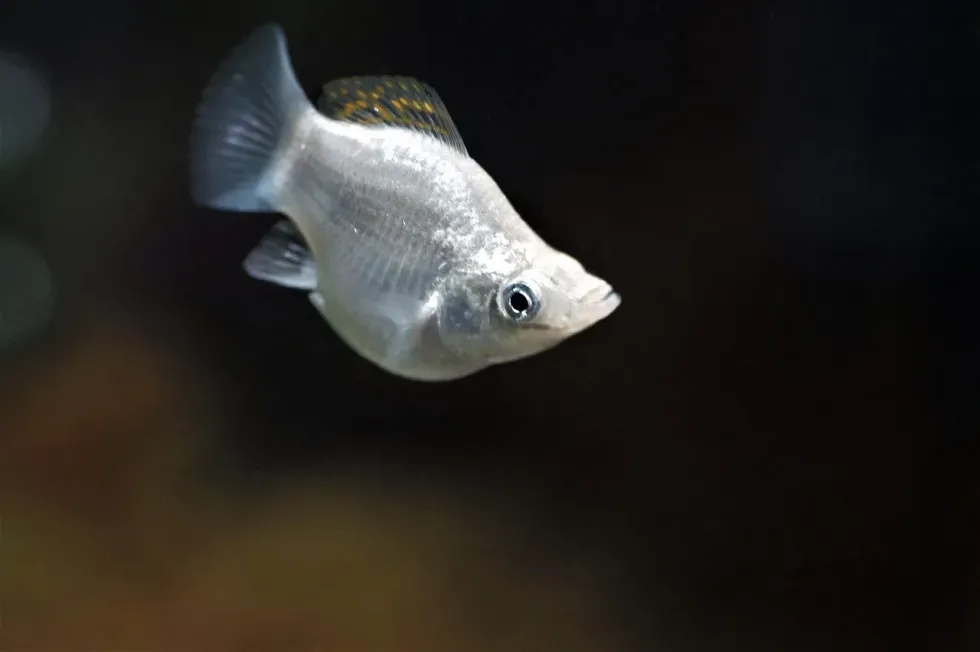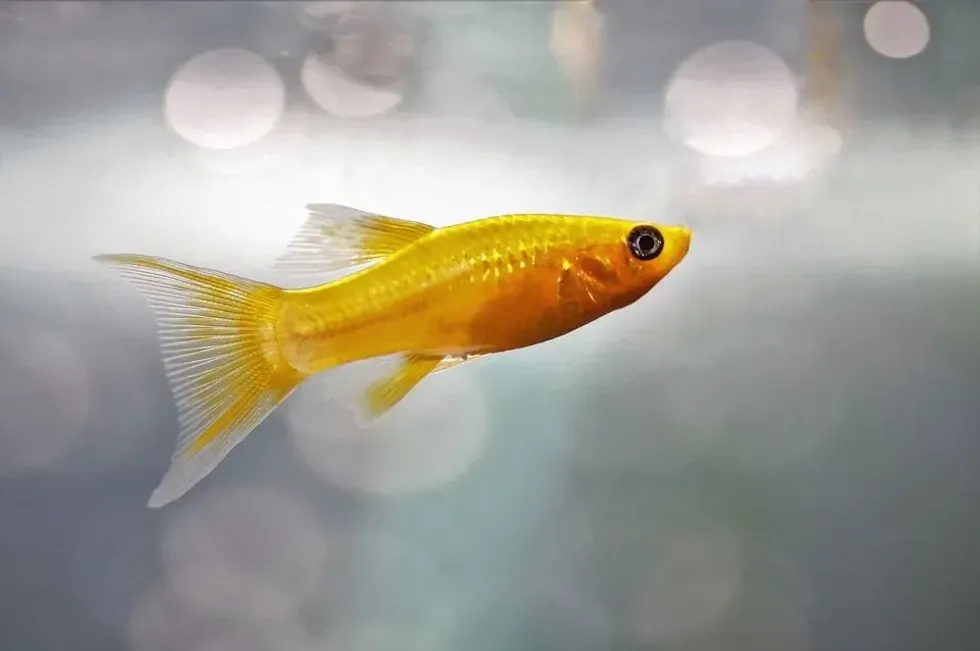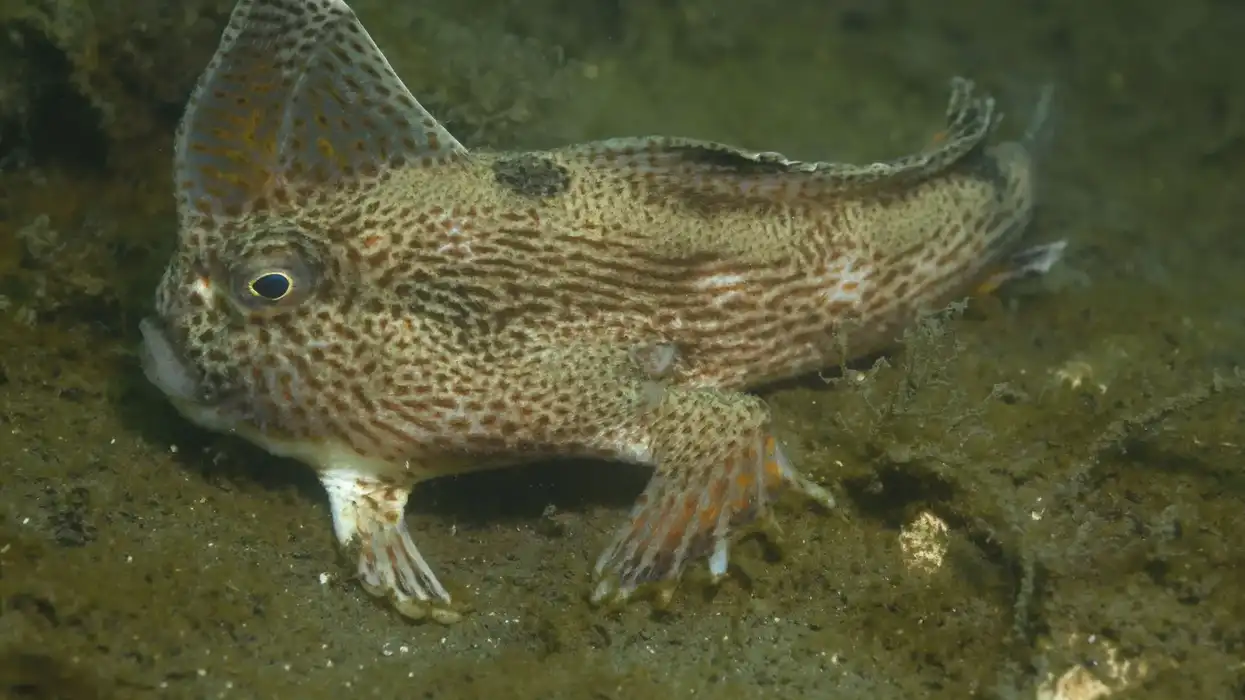Fun Molly Fish Facts For Kids

Content
- What type of animal is molly fish?
- What class of animal do molly fish belong to?
- How many molly fishes are there in the world?
- Where does molly fish live?
- What is molly fish's habitat?
- Who does molly fish live with?
- How long does a molly fish live?
- How do they reproduce?
- What is their conservation status?
- What does molly fish look like?
- How cute are they?
- How do they communicate?
- How big is a molly fish?
- How fast can molly fish swim?
- How much does a molly fish weigh?
- What are the male and female names of the species?
- What would you call a baby molly fish?
- What do they eat?
- Are they dangerous?
- Would they make a good pet?
- Did you know...
- The molly fish's call
- Where do molly fish originate from?
If you are interested in reading about the aquatic world, one fish that you should definitely read about is the molly fish. These fish are found in Central and South America. Being smaller and available in various colors like black, white, brown, golden, and more, they look really beautiful.
The molly fish is a surface feeder. These fish do not reside deep in the ocean. These fish like to live in freshwater environments but sometimes can be found in saltwater and brackish waters.
Molly fishes have various species, and the most common ones are common molly fish, white molly fish, black molly fish, Mexican molly fish, and sailfin molly fish. This species can be found in the wild in abundance.
These fish, being able to survive in both salt and freshwater, become prey to many predators. Being small, they can be easily preyed on in the wild. Large fishes, bullfrogs, raccoons, and other predators find them and eat them, even when mollies try their best to hide under vegetation.
The conservation status of this fish is of Least Concern. As the species of molly fish are abundant, you need not worry about their conservation.
Mollies are livebearers, and when they give birth to babies, the babies are actually living and not eggs, like most juvenile fish. One thing you should know about the young of molly fish is that they are under threat.
Adult mollies do not stop themselves from feeding on these young ones. Hence, these young ones need to be protected from their own species.
If you are a beginner at pet-keeping, mollies are perfect for you. They are very affordable and are great community fish that are abundantly available. They are also very easy to look after and, might we add, very loving!
If you enjoyed reading facts about the molly fish, you should definitely read facts about redear sunfish facts and crown-of-thorns starfish facts.
Molly Fish Interesting Facts
What type of animal is molly fish?
Molly fish (Poecilia sphenops) is a fish, as the name suggests. It is a popular freshwater fish species.
What class of animal do molly fish belong to?
Molly fish belongs to the class of ray-finned fishes known as Actinopterygii.
How many molly fishes are there in the world?
This freshwater fish is pretty common, although the exact number of their population is unknown. This fish does not come under the category of Vulnerable or Endangered as their count is pretty common. There are many different species of mollies, and among these species, the most abundant molly is sailfin molly.
Where does molly fish live?
Molly fish are found commonly in southern and central America. Extending from the southern United States to Mexico's Yucatan peninsula, the habitat of molly (Poecilia latipinna) fish consists of freshwater areas.
However, sometimes, these fish can swim into brackish water estuaries. Different molly species can be found in other locations.
Common molly can be found in northern South America and all over Mexico. In contrast, sailfin molly can be found in the U.S. southeastern coast and the Gulf of Mexico, and the locations of coastal Yucatan and southeastern Mexico are for the Mexican molly.
What is molly fish's habitat?
The molly is particularly an American fish easily found in South and North America. They are now also seen in eastern Europe and Asian countries like Singapore, Japan, Taiwan, and Israel.
These fish love to be in deltas, lakes, ponds, swamps, marshes, estuaries, and ephemeral places in terms of habitats. They like to keep themselves safe by being at locations like under the floating vegetation so that predators don't find and attack them.
The water conditions they live in should have a temperature ranging between 64-82 F (18-28 C) and 7.5-8.5 pH range. They also have increased high tolerance and can be found in habitats like brackish water.
Who does molly fish live with?
Molly fish are social fishes and do not like to live alone. They tend to get very lonely if they do not have company.
They are found in groups. These fish like to be in groups with other molly fishes. Mollies can live with other fish as well.
Fishes that can live with mollies without any problem are goldfish, gourami, platys, angelfish, suckermouth catfish, neon tetras, guppies, green swordtail fish, southern platyfish, Siamese fighting fish, and cichlids. Mollies are known to be peaceful fishes, and hence, there is no problem for mollies in living with different tank mates.
How long does a molly fish live?
The molly fish lifespan is two to five years. This freshwater fish is not known to live a long life.
Their lifespan actually depends on the environment you provide when keeping them as a pet. The water conditions impact the lifespan of mollies as they are prone to diseases if the water conditions are poor.
It is seen that the females have a longer lifespan as compared to males, mostly because the males are smaller in size and predators prey on them.
How do they reproduce?
Mollies are actually livebearers. This means that the eggs of this fish develops in their bodies, and live babies are born.
These fish are bred easily while in captivity, and they mate pretty regularly. The conditions in the water tank should be ideal enough for them to carry out their breeding process.
The water tank should be clean as it can have an impact on them otherwise. If not the water tank, then wherever they are breeding, the water needs to be clean.
The breeding tank can be the same as the aquarium or water tank where they live, or you can choose a different breeding tank for them to breed and keep the water from the water tank clean.
If you have kept these fish in the aquarium, it should be a freshwater aquarium, and if you raise the temperature a little bit, it can help in the initiation of the breeding process of these fish.
Remember that the water temperature in the water tank or aquarium should not exceed 78 F (26 C). When these fish are ready to mate, males show a courting display for attracting females.
If the females are ready for breeding with the males, they initiate the process of mating.
The egg fertilization occurs, and after 35-45 days, they give birth to fry. Sometimes, the 'sneak-copulate' technique is used by males when they come from behind to fertilize the eggs.
Females prefer to mate with larger males. The larger mollies can give birth to 100 fry at once.
When the fry is born, they need to be kept away from adults, so they are protected and not eaten by them. The best way is to get a different breeding tank and put pregnant females in them.
So, when the fry is born, they will be safe. Once the fry is big enough, they can stay in the same tank as adults.
What is their conservation status?
The conversation status of this species is Least Concern. The sailfin molly (Poecilia latipinna) comes under the Least Concern category.
The biggest threat to species of mollies is larger fishes. As mollies are smaller in size, they are easy prey to large fish species like largemouth bass. Other than large fishes, mollies become food to aquatic insects, reptiles, aquatic birds, amphibians, and mammals.
The reason that mollies become easy prey is that they are surface feeders. Mollies hide under objects or vegetation, but they become prey to the predators pretty easily when they emerge near the water surface to feed.
Some common predators that prey on mollies are American alligators, bullfrogs, giant water bugs, raccoons, and snowy egrets. In an aquarium tank, the fry falls prey to other adult mollies. This is pretty common in aquarium tank settings.
Molly Fish Fun Facts
What does molly fish look like?
There are many molly varieties. Most of the species have the same body shape and style as the common molly.
Mollies have a flat body and a head that has a triangular shape. At the mid-section, these fish are wide, and their flat body tapers at the snout on one side, and on the other side, the tail is the end where this body tapers. They have a beautiful dorsal fin.
Being small in size, they are short-finned. You can easily differentiate between females and males. Male mollies have a smaller size as compared to female mollies.
The anal fin in the female fish is fanned and broad, whereas the anal fin in the male fish is smaller and pointed. One gravid spot is present in the female fish when they are pregnant with the young ones.

How cute are they?
These small fish are really cute. They are so adorable and peaceful in nature that you would want to keep them as your pet. Many people keep these fish as one of the pets in their homes. Their smaller size becomes a plus factor for people to keep them in aquariums.
How do they communicate?
There is no accurate information available as to how mollies communicate. Since they are fish, their ways of communication can be pretty similar to how other fishes communicate.
Fishes communicate with each other with the help of smell, motion, sound, bioluminescence, coloration, and electric impulses. You can say that mollies communicate with other mollies or other fishes in the same way.
How big is a molly fish?
Molly fish are really small in size. The average size that a fully grown fish of this species can have is 3-5 in (8-12 cm). This small size is the reason that they become prey to so many predators and can be kept in the aquarium tank easily. Sailfin mollies can be of a slightly bigger size.
How fast can molly fish swim?
All types of mollies, such as the balloon mollies, black molly, or others, swim at the average speed of 1.34 mph (2.1 kph)
How much does a molly fish weigh?
Being really small in size, this one is tough to answer. The weight of this small fish ranges between 0.0005-0.0010 lb (0.23-0.48 g).
Their specific weight is pretty difficult to find, but it can be seen in studies done at one point in time or another that a molly's weight changes after and before feeding, whether they are in the wild or kept in a tank.
What are the male and female names of the species?
There are no different names given to the sexes of molly fish. The male fish and the female fish are known by the same name: molly fish. Although, there are many molly fishes like black mollies, balloon mollies, sailfin mollies, and more.
What would you call a baby molly fish?
A baby molly is known as fry. The fry needs to be protected from adult fish because adult fish tend to jump to feed on them as soon as born.
What do they eat?
Mollies are known to be omnivores in nature. Because mollies are omnivores, they feed on algae and plants but also smaller invertebrates.
In an aquarium water tank, these fish can be given a food type that satisfies their food demand. Whether it is balloon molly, black molly, sailfin molly, or others, the diet of mollies has algae as an important food item. Other than this, they also feed on green vegetables.
So, you can give this fish spinach, lettuce, and zucchini as food. Other than this, you can get artificial food as well, like pellets and flakes, to feed this fish. You can also use small pieces of vegetables to feed them in your aquarium tank.
Brine shrimp and bloodworms can serve as food, too. Feed them in small amounts two times a day, whether it is vegetables or brine shrimp.
Are they dangerous?
Mollies are known to be peaceful in nature for the majority of the time. This does not mean that they do not get aggressive.
If you're wondering, 'Why is my molly fish so aggressive? ', you should know that mollies are known to be aggressive if they have tank mates that are aggressive in nature or if mollies are left in very crowded areas.
So ensure that your mollies are also placed in the right company of fishes. Make sure to keep your mollies in groups of four or more, and that most of them are females – as males tend to bully and become aggressive.
The adults feed on the young mollies when they are just born. So, if you have a tank where you have kept mollies as your pet, be sure to have a different tank for the pregnant mollies to give birth in.
Would they make a good pet?
Mollies are small-sized fishes that do not have a long lifespan. They just live up to five years.
This is a well-known species of fish that live in freshwater areas. Having mollies as a pet is a good idea.
It is a good idea because mollies can be good pets. Many aquarists keep mollies in their freshwater aquarium tank.
The small size and their calm nature make them the right choice to keep in your aquarium. You can also keep other fishes with this species of fish in the aquarium.
You need to take care of the water conditions of the aquarium. The water needs to be clean in the tank because mollies' lifespan can decrease if the water in the aquarium tank is not clean.
They tend to die easily if the water conditions are not favorable. Also, these are one of the easiest fish to live with other tank mates.
You can keep various mollies together like balloon molly, dalmatian molly, black molly, sailfin mollies, and other species that are compatible to be their tank mates. Do not forget to take care of their food habits so that they live a good life for a good time.
If you have pregnant mollies, it is better if you keep them in another tank before they are about to give birth. By doing this, the young ones can be protected from the adults who will end up eating them as soon as they are born in the same tank.
Keeping mollies is not very difficult as their diet is pretty simple as well. They love to feed on vegetables, so you can feed them some lettuce or spinach as well.
Yes, these fish (mollies) are omnivores, but they can easily survive on vegetables because algae are their favorite food. You can give them smaller pieces of food.
You can feed them artificial food for their nutritional satisfaction. Besides feeding, do not forget to provide them a clean environment because their lifespan of five years depends on a clean environment.
Did you know...
Molly fish, a freshwater species, can be found in saltwater and brackish water also.
These fish are present in not only one but various colors, black, white, golden, yellow, and more because of the hybridization and breeding, as they are prolific breeders.
Molly fish are livebearers, which makes them different from other species of fish that you might choose to keep as a pet in your aquariums.
The largest species of molly fish can actually produce 100 babies at one time.
Male molly fish are known to have gonopodium. It is a specialized anal fin that helps the males in depositing sperms in the females, where the sperms are retained for a longer time.
These fish are widely used to ensure healthy levels of bacterial colonies in marine tanks or in an aquarium. They ensure that the other aquatic animals have an optimal environment to thrive in by removing any toxic waste that could be detrimental to the tank.
The molly fish's call
There is no exact information given regarding the molly fish's call. As these are fish, you can say that they communicate in the same way as other fishes do. They communicate with color, smell, bioluminescence, and sounds.
Where do molly fish originate from?
Mollies were first seen during the 1820s by naturalists. Mollies were primarily seen in South and North America as they are American fishes.
The molly became a popular freshwater aquarium fish in 1899 because of its small size and easy care. One molly species can breed with other mollies, and because of this, they exist in different colors, configurations, and patterns. There are many mollies like balloon mollies, black mollies, dalmatian molly, and sailfin molly.
Here at Kidadl, we have carefully created lots of interesting family-friendly animal facts for everyone to discover! For more relatable content, check out these Nile perch facts and John Dory facts pages.
You can even occupy yourself at home by coloring in one of our free printable dalmatian molly fish coloring pages.
We Want Your Photos!
More for You
See All
Bachelor of Commerce specializing in Accounting and Finance, Master of Business Administration

Divya RaghavBachelor of Commerce specializing in Accounting and Finance, Master of Business Administration
With a diverse range of experience in finance, administration, and operations, Divya is a diligent worker known for her attention to detail. Born and raised in Bangalore, she completed her Bachelor's in Commerce from Christ University and is now pursuing an MBA at Narsee Monjee Institute of Management Studies, Bangalore. Along with her professional pursuits, Divya has a passion for baking, dancing, and writing content. She is also an avid animal lover who dedicates her time to volunteering for animal welfare causes.
Bachelor of Commerce specializing in Marketing and HR

Pradhanya RaoBachelor of Commerce specializing in Marketing and HR
With a Bachelor’s degree in Commerce from Christ University, Bangalore, Pradhanya's passion for the English language and literature led her to explore the field of content writing, where she has gained extensive experience in writing, reviewing, editing, and fact-checking. She has also earned certifications in Google Ads Search, Google Ads Display, and Social Media Marketing, showcasing her proficiency in digital marketing.
Disclaimer
1) Kidadl is independent and to make our service free to you the reader we are supported by advertising. We hope you love our recommendations for products and services! What we suggest is selected independently by the Kidadl team. If you purchase using the Buy Now button we may earn a small commission. This does not influence our choices. Prices are correct and items are available at the time the article was published but we cannot guarantee that on the time of reading. Please note that Kidadl is a participant in the Amazon Services LLC Associates Program, an affiliate advertising program designed to provide a means for sites to earn advertising fees by advertising and linking to Amazon. We also link to other websites, but are not responsible for their content.
2) At Kidadl, we strive to recommend the very best activities and events. We will always aim to give you accurate information at the date of publication - however, information does change, so it’s important you do your own research, double-check and make the decision that is right for your family. We recognise that not all activities and ideas are appropriate for all children and families or in all circumstances. Our recommended activities are based on age but these are a guide. We recommend that these ideas are used as inspiration, that ideas are undertaken with appropriate adult supervision, and that each adult uses their own discretion and knowledge of their children to consider the safety and suitability. Kidadl cannot accept liability for the execution of these ideas, and parental supervision is advised at all times, as safety is paramount. Anyone using the information provided by Kidadl does so at their own risk and we can not accept liability if things go wrong.
3) Because we are an educational resource, we have quotes and facts about a range of historical and modern figures. We do not endorse the actions of or rhetoric of all the people included in these collections, but we think they are important for growing minds to learn about under the guidance of parents or guardians.







